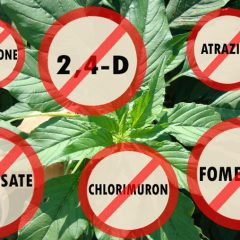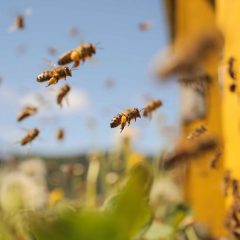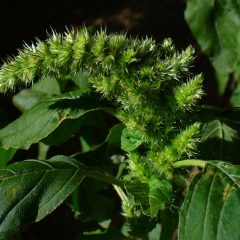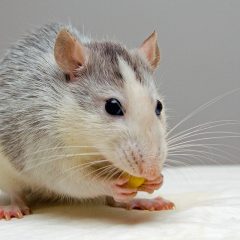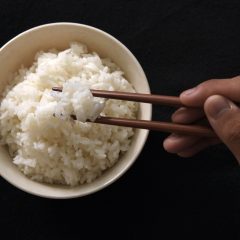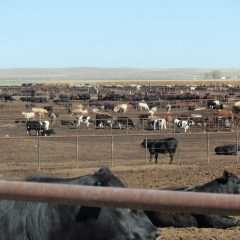In an experiment conducted in Missouri, researchers have identified Palmer amaranth that is resistant to six herbicides. Amaranthus palmerii is a one tough weed. When full grown, at its base, stalks can match the circumference of a man’s wrist. One plant can set over 400,000 seeds. It has a long history of herbicide resistance, and […]
Read More, References, Comment »
By: Rachel Benbrook The Pacific Northwest’s “mushroom man” Paul Stamets partnered with research scientists from Washington State University and USDA to conduct a potentially groundbreaking experiment showing that mushroom extracts can help bees fight off viruses. The research, published in Scientific Reports, was triggered by Stamets, a mycologist, author, and entrepreneur based in the Puget Sound. […]
Read More, References, Comment »
A research team from the Department of Integrative Biology at the University of Texas in Austin has made an important contribution to the body of research seeking to answer this key question: Is the world’s most heavily used pesticide (glyphosate) contributing to the widespread decline of honeybees and other pollinators? Glyphosate is the #1 herbicide […]
Read More, References, Comment »
Herbicide-resistant weeds are a common topic around here, so we were interested in this new science out of Argentina identifying a new “superweed” resistant to glyphosate, dicamba, and 2,4-D. Plus, the researchers learned more about the mechanism of herbicide resistance in one of the most common weed families – the Amaranths (Amaranthus species). Farmers throughout the croplands of the […]
Read More, References, Comment »
In stunning new science, a research team at the University of Lleida, Spain and the IrsiCaixa AIDS Research Institute in Barcelona have developed a variety of transgenic rice that can be used to produce a topical medication to prevent HIV infection. The idea behind this type of research is that these modified plants are essentially a […]
Read More, References, Comment »
A new study published in Science makes some progress untangling the roots of what’s known as the “irrigation paradox.” Water is precious, and irrigating crops uses a whole lot of it – accounting for 70% of global fesh water extractions. And, in many key agricultural regions, water availability is the key limiting factor to crop yields, and […]
Read More, References, Comment »
In a paper sure to trigger a full-on immune response from Monsanto/Bayer and ag biotech proponents, rats fed a triple-stack GE corn for about 6 months had clear-cut damage to their stomach lining. The triple-stack corn fed to the rats expressed two Bt genes (MON 863 and MON 810), and the NK603 gene conferring resistance […]
Read More, References, Comment »
“Physiologically we’re discovering that not every calorie is equal.” Dr. Siddahrta Mukherjee, Columbia University Medical Center Amen. Each gram of fat contains roughly the same calories, yet the nutritional value of fat varies greatly across different saturated fats, in saturated fats versus monounsaturated fats, in omega-3 vs. omega-6 polyunsaturated fatty acids (PUFA), in long-chain PUFAs […]
Read More, References, Comment »
A recent story on NPR reviewed a new body of emerging research on the nutritional impact on food crops of the higher carbon dioxide levels in the atmosphere that are the driving force of global climate change. Atmospheric CO2 levels are up and continuing to rise, and scientists are working to understand how this will effect […]
Read More, References, Comment »
New research by a team at the University of Washington evaluates the environmental costs of our food choices, specifically livestock, farmed seafood, and wild-caught fish. The study, which will be published in Frontiers in Ecology and the Environment is believed to be “most comprehensive look at the environmental impacts of different types of animal protein production,” […]
Read More, References, Comment »

